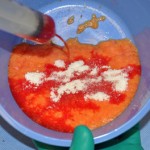The long known presence of stem cells in fat has led to an exciting wave of scientific and clinical efforts to harness the potential of this ‘wonder’ cell.The real question is wondering what benefits stem cells can really offer.Why do we have cells that lie around dormant in our fat but yet has the potential to turn into any type of cell and grow new tissues if properly stimulated? The reason must be as a reserve for new tissue regeneration should that be needed.
Given the ease from which fat can be extracted through liposuction, whole new uses are being derived for what may be capable with stem cell-derived fat grafting. (SCFG) Fat is being injected all over the body by plastic surgeons, mainly because it is easy to do and perfectly safe. Injected fat has many body uses from body contouring to facial rejuvenation. For the body, buttock augmentation and breast reconstruction (lumpectomy defects) are being widely done. Fat breast augmentations are being approached more cautiously but is gaining some momentum also. The other good body use is that of hand rejuvenation, using the injected fat to fill hollows between the extensor tendons and to camouflage prominent veins.
The face, however, is the most widely implanted body part for fat injections. More recent research in facial aging has shown that we loss fat in our face as we age. This facial deflation is one of the reasons that we look old and contributes to skin sagging. This has led to younger people getting fat injections at an early age and fat injections being used as part of a facelift procedure for more advanced degrees of facial aging.
In the most contemporary spin of fat grafting to the face comes the Stem Cell Face Lift. The concept is that stem-rich fat grafts combined with skin tightening makes for a better facelift result. Proponents claim that the patient’s own stem cells provide a regenerative effect that gives a significantly better end result in face lift procedures with longer lasting results and has a youthful restorative effect on one’s skin. The skin is claimed to be changed with smaller pore size and less wrinkles and pigmentation.
While controversial, this newer Stem Cell Facelift uses an activation process that is believed to activate the stem cells once they are injected with the fat. While laying dormant in the fat donor site, they may only be beneficial if they are brought to life in their transplanted location. Various stimulation methods are being proposed including the addition of chemical stimulants and even low-level laser light therapy. This newer process is to be differentiated from just plain old fat grafting to the face (which is not that old) by applying amethod to trigger and activate the stem cells either during or after the fat transfer. It is claimed that patients receiving fat injections alone done the traditional way, without the advantage of activation, will see little to none of the actual stem cell’s regenerative effects on the face and skin.

With all of this being said, is the Stem Cell Facelift actual science or more science fiction? Is it hype or hope? At this point I would say a little of both. The real scientists of stem cells would most certainly tell us that the use of stem cells isn’t that simple. While stem cells have been extensively studied and their properties recognized, how to harness their potential and make them work is far less clear. While moving them from one place to another in the body just seems like it should work doesn’t make it so. This is the principle of what I call a ‘trueism’ . A trueism is anything on the surface that just seems so logical and natural that it is obvious that it works or is true. The problem with trueisms is that most of them, on closer inspection over time, are shown to be not true at all. Stem cells and their effects on facial aging has the potential to be a great example of a trueism. They certainly are associated now with a lot of hype.
Conversely, the hopeful part of a Stem Cell Facelift is that it is a perfectly natural procedure that has no harmful effects, an almost organic procedure if you will. It is all the patient’s own tissues and may exemplify the appealing concept of ‘heal thyself’. Because one’s own cells are being used (recycled?), it is not a procedure that requires FDA approval or that of any governing medical organization. (so don’t be misled that it is an FDA-approved procedure or technique) At the worst, one gets the benefit of fat grafting whether the stem cells really become alive or not. And the use of fat grafts to the face with our current appreciation of what happens as our face ages is a proven benefit.
Dr. Barry Eppley
Indianapolis Indiana


